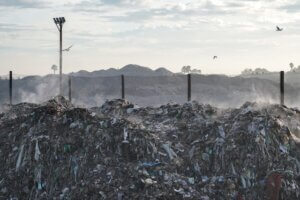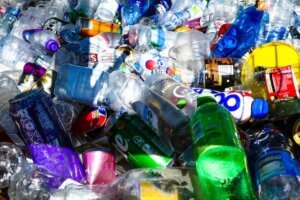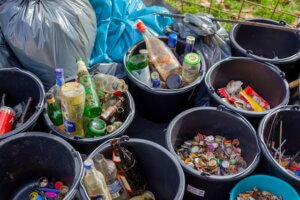Hoarder Cleanup: How to Dispose of Items Responsibly
Hoarder Cleanup: How to Dispose of Items Responsibly
Summary
The article provides a comprehensive guide to responsible hoarder cleanup, emphasising the importance of strategic planning and sensitive handling. It covers the different facets of the process, from understanding the scale of hoarding to the tools required and responsible disposal methods. The article advises on sorting items into recyclable, donatable, and landfill categories and suggests consulting local regulations or professional services for specialised disposal. It stresses the ethical responsibility of minimising environmental impact while assisting hoarders.
When dealing with hoarder cleanup, it’s essential to approach the task with sensitivity and strategic planning. Beyond the emotional and psychological factors, a crucial element often overlooked is responsible disposal. The sheer volume of items involved in hoarder cleanup can pose an environmental threat if not handled with care. In this comprehensive guide, we’ll delve into methods for disposing of items responsibly, ensuring you do right by both the individual involved and the planet.
Understanding the Magnitude of the Problem
The first step to effective and responsible hoarder cleanup is grasping the scope of the issue. Hoarding situations can range from mild clutter to severe cases that involve biohazards. Knowing what you’re up against will help you better plan for the items you’ll need to dispose of, be it electronics, clothing, or even hazardous materials requiring professional services.
Essential Tools for Responsible Disposal
Investing in the right tools can make a significant difference in how efficiently and responsibly you dispose of items. Biodegradable trash bags, proper gloves, and sanitising agents are essential. Additionally, you may need specialised containers for items like batteries or chemical substances, which cannot be disposed of with regular waste.
Sorting: The Key to Responsible Disposal
The sorting phase is pivotal during a hoarder cleanup. This is when you decide what gets recycled, what gets donated, and what truly needs to be trashed. Sorting should be done with attention to detail, categorising items based on their disposal needs.
Recyclable
Commonly recycled items include plastics, metals, and glass. Collect these in separate bins and take them to your local recycling facility.
Donatable
Clothes that are still in good condition, furniture that can be refurbished, and unopened non-perishable foods can find a second home. Reach out to local charities or use platforms like Freecycle to give these items a new lease on life.
Landfill Items
Anything that cannot be recycled or donated should be sent to landfill. However, you must ensure these are items that are genuinely non-recyclable and non-hazardous.
Specialty Items
Electronics, batteries, and hazardous substances require special disposal methods. Local government websites often provide information on how to dispose of these responsibly, or you can hire specialised hoarder cleanup services to complete the cleaning and disposal processes.
Consult Local Regulations
Your locality might have specific rules or services for large-scale waste disposal. Some areas have bulk trash pickup services, while others may require you to bring items to a disposal facility. In some cases, you may need permits for disposal, especially for large items like furniture or appliances.
Partnering with Professional Services
Sometimes the task is too large to handle independently. Professional hoarder cleanup services are well-versed in the ethics and legalities of large-scale waste management. They can provide invaluable guidance on how to dispose of items in the most responsible way.
Responsible disposal in hoarder cleanup is not just a matter of following laws; it’s a moral imperative. We have a duty to minimise the impact on our environment while helping someone regain control of their living space. By adopting the methods and strategies outlined in this guide, you can ensure you’re taking the most ethical approach to this sensitive task.
FAQs
What is hoarder cleanup, and how does it differ from regular cleaning?
Hoarder cleanup is a specialised process aimed at clearing excessive clutter and waste from a hoarder’s home. Unlike regular cleaning, which involves routine tasks like dusting, sweeping, and mopping, hoarder cleanup requires meticulous planning and execution. It often involves the removal of large quantities of items, some of which could be hazardous or bio-waste. The process is not just physical; it also requires a sensitive approach to handle the emotional and psychological aspects of hoarding.
What are the risks associated with hoarder cleanup?
The risks can be multifield. There are physical risks such as tripping hazards, biohazards like mould or animal waste, and even fire risks due to the build-up of flammable materials. Health risks are also a major concern, as unsanitary conditions could lead to respiratory issues or infections. Emotional and psychological stress for the hoarder, as well as for those doing the cleanup, is another critical factor.
Can I do a hoarder cleanup by myself?
While minor hoarding situations may be manageable individually, severe cases often require professional assistance. Specialised hoarder cleanup services have the expertise and equipment to handle large-scale and hazardous cleanup safely and effectively. They are also trained to deal with the emotional and psychological aspects sensitively, providing a more holistic solution.
What tools and supplies are essential for hoarder cleanup?
At the minimum, you will need heavy-duty trash bags, cleaning agents, and protective gear such as gloves, masks, and possibly hazmat suits for extreme cases. Specialised tools like shovels, rakes, and perhaps even dumpsters might be necessary for larger clean-ups. It’s also advisable to have first-aid kits readily available.
How do I responsibly dispose of items during a hoarder cleanup?
Items should be sorted into categories such as recyclables, donatable, and landfill waste. Recyclables should be taken to appropriate facilities, and items in good condition can be donated to charities. Specialty items like electronics or hazardous materials often have specific disposal procedures, which can usually be found on local government websites. Partnering with a professional hoarder cleanup service can also help ensure responsible disposal.
Why Choose AllAces?
AllAces Cleaning & Restoration has more than 35 years of industry experience, handling a vast variety of hoarder cleanup projects. Our IICRC-certified technicians have the training and experience to safely and effectively restore your property to a pre-loss condition, completing all necessary processes including sorting, sanitisation and disposal.



